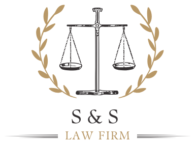The Law of Evidence In india is governed by the Indian Evidence Act, 1872, which lays down the rules regarding what evidence is admissible in courts of law. It plays a crucial role in both civil and criminal proceedings by determining how facts should be proved.
1. Introduction to the Law of Evidence
- Evidence refers to any material or testimony presented to prove or disprove a fact in legal proceedings.
- The Indian Evidence Act, 1872, drafted by Sir James Fitzjames Stephen, codifies the principles of admissibility, relevance, and weight of evidence in court.
2. Types of Evidence
The Act classifies evidence into different categories:
A. Oral and Documentary Evidence
- Oral Evidence (Section 59-60): Statements made by witnesses in court regarding facts they perceived.
- Documentary Evidence (Section 61-90): Includes written documents, electronic records, and any written proof.
B. Primary and Secondary Evidence
- Primary Evidence (Section 62): The original document itself.
- Secondary Evidence (Section 63): Copies, certified documents, or oral accounts of a document’s content.
C. Direct and Circumstantial Evidence
- Direct Evidence: Proves a fact directly (e.g., eyewitness testimony).
- Circumstantial Evidence: Indirect proof based on inference (e.g., motive, surrounding circumstances).
D. Real and Hearsay Evidence
- Real Evidence: Physical objects (e.g., fingerprints, weapons).
- Hearsay Evidence (Section 60): Second-hand information, generally inadmissible unless covered under exceptions.
3. Key Provisions of the Indian Evidence Act, 1872
The Act is divided into three parts:
I. Relevancy of Facts (Sections 5-55)
Defines which facts are relevant in court:
- Facts in issue and relevant facts
- Admissions and confessions (Section 17-31)
- Statements by persons who cannot be called as witnesses
- Expert opinions (Section 45)
II. Mode of Proof (Sections 56-100)
Covers rules of proving documents and testimonies:
- Burden of Proof (Sections 101-114A)
- Presumptions regarding documents
- Estoppel (Section 115): Prevents a person from denying something they previously accepted as true.
III. Witnesses and Examination (Sections 101-167)
Lays down rules for examining witnesses:
- Competency of Witnesses (Section 118)
- Privileges of Witnesses
- Examination-in-Chief, Cross-Examination, Re-Examination
4. Burden of Proof and Presumptions
- Burden of Proof lies on the party making an assertion (Section 101).
- Presumptions exist in cases of:
- Legitimacy of children (Section 112)
- Presumption as to documents 30 years old (Section 90)
- Presumption in rape cases (Section 114A)
5. Confessions and Admissions
- Confession: A direct acknowledgment of guilt (Sections 24-30).
- Admission: A statement recognizing certain facts (Section 17).
- Involuntary confessions (made under coercion) are inadmissible.
6. Expert Opinion and Forensic Evidence
- Expert Witnesses (Section 45): Courts can rely on experts in forensics, medical science, handwriting, fingerprints, and technology.
- DNA Evidence: Increasingly used for identification in criminal cases.
7. Electronic Evidence (Section 65A & 65B)
With technological advancements, the Information Technology Act, 2000, amended the Evidence Act to include electronic records as admissible evidence.
- Conditions for electronic evidence:
- Must be produced from an authentic source.
- The party presenting it must prove its integrity.
8. Privileged Communications
Certain communications are protected from disclosure:
- Attorney-Client Privilege (Section 126)
- Communications during marriage (Section 122)
- State Privilege (Section 123)
9. Recent Developments and Amendments
- Recognition of electronic records in trials
- Use of video conferencing for witness examination
- Supreme Court’s ruling on Narco-analysis and Lie Detector Tests: Conducting them without consent violates Article 20(3) of the Constitution.
10. Conclusion
The Indian Evidence Act, 1872 is fundamental in ensuring justice by regulating admissibility, authenticity, and weight of evidence in court proceedings. With evolving technology and judicial interpretations, the law continues to adapt to modern legal challenges.
Would you like details on any specific section or recent case laws related to evidence?
